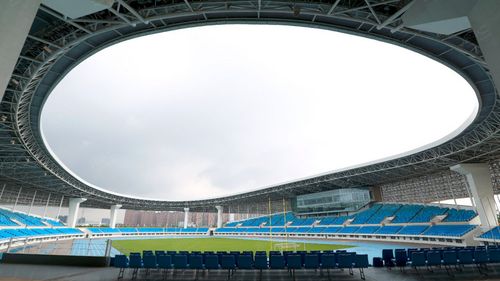体育特色教育活动环境要遵循的原则
Title: Navigating the Unique Challenges of Sporting Environments: Strategies and Guidance
In the realm of sports, various environments pose distinctive challenges that athletes, coaches, and administrators must navigate. From the unpredictable nature of outdoor arenas to the highpressure atmosphere of stadiums filled with passionate fans, each setting requires specific strategies and preparations. Let's explore the nuances of these environments across different sports and offer guidance on how to thrive within them.
1. Outdoor Sporting Arenas: Embracing Nature's Variables
Outdoor sporting arenas, such as golf courses, tennis courts, and soccer fields, present athletes with a unique set of challenges due to their exposure to nature's elements. Here's how to adapt:
Weather Preparedness
: Stay informed about weather forecasts and be ready to adjust strategies accordingly. Have appropriate gear, such as rain jackets or sun hats, to mitigate the impact of weather conditions on performance.
Terrain Awareness
: Familiarize yourself with the terrain of the playing field. Whether it's undulating fairways in golf or uneven surfaces in outdoor tennis, understanding the landscape can give you a competitive edge.
Flexibility in Tactics
: Be prepared to modify game plans based on environmental factors. Wind direction in golf, for example, can influence club selection and shot trajectory, requiring adaptability on the fly.2. Indoor Stadiums: Managing the Pressure of Large Crowds
Indoor stadiums, packed with enthusiastic fans, create an electrifying atmosphere that can both inspire and intimidate athletes. Here's how to thrive under the spotlight:
Psychological Preparation
: Develop mental resilience to thrive under pressure. Techniques such as visualization, mindfulness, and preperformance routines can help athletes stay focused amidst the noise and excitement of a packed stadium.
Fan Engagement
: Instead of viewing the crowd as a distraction, harness their energy to fuel your performance. Use crowd support as motivation, turning the pressure into a positive force that drives your determination to succeed.
Focus on Process
: Amidst the spectacle of a large crowd, maintain focus on the task at hand. Break down performance objectives into manageable steps, concentrating on executing each skill to the best of your ability, regardless of external distractions.3. Aquatic Environments: Adapting to Water Dynamics
Sports conducted in aquatic environments, such as swimming, rowing, and sailing, require athletes to contend with the fluid dynamics of water. Here's how to excel in these settings:
Technical Proficiency
: Master the technical aspects of your sport to navigate water dynamics effectively. In rowing, for instance, understanding blade angles and stroke technique is crucial for maximizing propulsion through the water.
Environmental Awareness
: Stay attuned to environmental factors such as currents, tides, and wind patterns. Adjust your strategy and pacing accordingly to leverage these natural forces to your advantage.
Equipment Optimization
: Invest in highquality equipment designed for performance in aquatic environments. From hydrodynamic swimsuits to lightweight yet sturdy boat materials, the right gear can enhance your efficiency and speed in the water.4. Extreme Conditions: Safeguarding Health and Performance
In certain sports, athletes may encounter extreme environmental conditions, such as high altitude in mountain climbing or extreme heat in desert ultramarathons. Here's how to mitigate risks and optimize performance:
Gradual Acclimatization
: When facing altitude or temperature extremes, allow sufficient time for acclimatization to prevent adverse health effects such as altitude sickness or heat exhaustion. Gradually expose yourself to increasing levels of stress to build tolerance over time.
Hydration and Nutrition
: Prioritize hydration and nutrition to sustain energy levels and prevent dehydration or heatrelated illnesses. Adjust fluid intake and electrolyte balance based on environmental conditions and exertion levels.
Monitoring Vital Signs
: Keep track of vital signs such as heart rate, body temperature, and oxygen saturation to gauge physiological responses to extreme conditions. Have contingency plans in place for rapid response to any signs of distress or discomfort.By understanding the unique challenges of different sporting environments and implementing tailored strategies, athletes can optimize their performance and thrive amidst diverse conditions. Whether it's embracing the unpredictability of outdoor arenas or harnessing the energy of indoor stadiums, adaptation and preparation are key to success in the dynamic world of sports.


